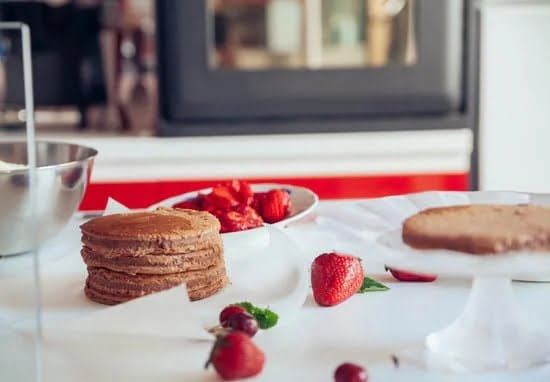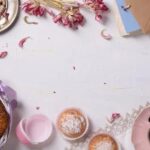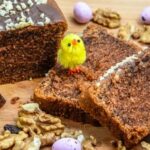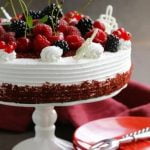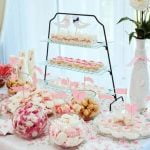Welcome to the ultimate guide on how to decorate an Easter cake like a pro. Easter is a special time of year filled with joy and celebration, and what better way to commemorate the occasion than by creating a beautiful and delicious centerpiece for your table?
In this comprehensive article, we will explore the history and symbolism behind Easter, uncover essential tools and ingredients you’ll need, learn step-by-step decorating techniques, discover Easter-inspired themes and designs, and so much more. Whether you’re a beginner or an experienced baker, this guide will provide you with all the knowledge and inspiration you need to create an Easter cake that impresses everyone.
Easter has long been associated with new beginnings and the arrival of spring. It’s a time when families come together to celebrate the resurrection of Jesus Christ and the joy of rebirth. Decorating cakes for Easter has become a cherished tradition in many cultures around the world.
Not only does it serve as a delicious dessert, but it also serves as a visual representation of the joyous spirit of Easter. By adorning a cake with vibrant colors, symbols, and intricate designs, we express our love for this holiday in edible form.
Before diving into the art of decorating an Easter cake, it’s important to gather all the necessary tools and ingredients. From cake pans in various shapes and sizes to piping bags filled with luscious buttercream frosting or fondant icing in an array of colors, each element plays a crucial role in achieving professional-looking results.
Edible decorations such as colored sprinkles, chocolate eggs, sugar flowers, or custom fondant creations will add that extra touch of magic to your masterpiece. With all these essential items at your disposal, you’ll be well-prepared to embark on your journey of creating a show-stopping Easter cake.
Now that we have set the stage for our exciting adventure into cake decorating territory let’s move on to exploring step-by-step techniques that will transform an ordinary cake into a stunning work of art. We’ll cover everything from crumb coating and frosting to buttercream piping, fondant shaping, and even edible painting.
Each technique will be explained in detail with accompanying visuals to ensure that you have a thorough understanding of how to achieve each specific design element. No matter your skill level, you’ll be equipped with the knowledge and confidence to turn your Easter cake vision into reality.
History and Symbolism of Easter
The Origins of Easter
Easter is a Christian holiday that commemorates the resurrection of Jesus Christ from the dead. It is considered one of the most significant events in Christianity and is celebrated by millions of people around the world. The exact origins of Easter are rooted in both religious and pagan traditions, making it a holiday with a rich and diverse history.
The earliest records of Easter celebrations date back to the 2nd century, where Christians observed this holy day by participating in baptismal rites and attending church services. However, many of the symbols associated with Easter can be traced back to pre-Christian traditions. For example, the name “Easter” itself derives from Eostre or Ostara, an ancient Germanic pagan goddess associated with spring and fertility.
The Symbolism behind Decorated Cakes
Decorating cakes for Easter has become a cherished tradition that symbolizes rebirth, new beginnings, and the arrival of spring. The act of adorning a cake with vibrant colors, intricate designs, and edible decorations reflects the joyous spirit of this season.
One commonly used decoration is the Easter egg. Eggs have long been a symbol of fertility and new life since ancient times. Early Christians adopted this symbol to represent the resurrection of Jesus Christ, as eggs were likened to His tomb from which He emerged alive again.
Another popular cake decoration for Easter is the lamb. The lamb holds great significance in Christianity as it represents Jesus Christ, who is often referred to as “the Lamb of God.” By incorporating a lamb-shaped design or figurine into your cake, you pay homage to this symbolism and evoke feelings of purity and innocence.
Overall, decorating an Easter cake allows individuals to embrace both their faith and the joyousness that comes with celebrating this season. It provides an opportunity for creative expression while sharing meaningful messages through visual representation.
Essential Tools and Ingredients
To create a stunning Easter cake, you will need the right tools and ingredients. Here are some must-have items that will help you turn your cake into a masterpiece:
- Cake Pans: Invest in high-quality cake pans in various sizes and shapes to give you versatility in designing your Easter cake. Round pans are great for traditional layered cakes, while square or rectangular pans can be used for unique designs.
- Piping Bags: Piping bags are essential for creating beautiful decorations and designs on your cake. Look for reusable bags made of strong material that can withstand the pressure of squeezing frosting through different tips.
- Food Coloring: To bring vibrant colors to your Easter cake, stock up on gel-based food coloring. These provide intense shades without altering the consistency of your frosting or batter.
- Edible Decorations: Add a touch of whimsy to your Easter cake with edible decorations such as colored sprinkles, edible flowers, chocolate eggs, or themed sugar decorations. These ready-to-use embellishments offer an easy way to enhance the overall look of your cake.
- Offset Spatula: A small offset spatula is perfect for spreading frosting smoothly over the surface of your cake and achieving clean edges. Invest in one with a sturdy handle to make frosting easier and more precise.
- Fondant: Fondant is a versatile decorating ingredient that allows you to create intricate designs like bows, flowers, and figurines. Choose a high-quality fondant in various colors or opt for white fondant that you can color yourself.
| Tool/Ingredient | Description |
|---|---|
| Cake Pans | Invest in high-quality pans in various sizes and shapes. |
| Piping Bags | Reusable bags made of strong material for decorating. |
| Food Coloring | Gel-based colors for vibrant shades without altering consistency. |
| Edible Decorations | Colored sprinkles, edible flowers, chocolate eggs, and sugar decorations. |
| Offset Spatula | A small spatula for spreading frosting and achieving clean edges. |
| Fondant | A versatile decorating ingredient for creating intricate designs. |
Now that you are familiar with the essential tools and ingredients, you are well-equipped to create a show-stopping Easter cake. Let your creativity flow and enjoy the process of turning a simple cake into a work of art. Happy decorating.
Choosing the Perfect Cake
When it comes to decorating an Easter cake, one important aspect to consider is the flavor of the cake itself. Choosing a delicious cake flavor that complements your Easter theme and decorations can elevate your creation to a whole new level. Here are some tips and tricks for selecting the perfect cake flavor for your Easter masterpiece:
- Consider the season: Easter is celebrated during the springtime, so it’s a great opportunity to incorporate flavors that evoke the freshness and vibrancy of the season. Light and fruity flavors such as lemon, strawberry, or raspberry can add a refreshing touch to your cake. Alternatively, you can opt for classic flavors like vanilla or chocolate and enhance them with hints of floral or citrus notes.
- Match flavors with decorations: Think about how the flavor of your cake will pair with the decorations you plan to use. For example, if you’re planning to decorate your cake with coconut flakes or tropical-themed elements, consider using a coconut-flavored cake as the base. Similarly, if you’re incorporating citrusy flavors in your decorations, a lemon-flavored cake would be an excellent choice.
- Consider dietary restrictions: Keep in mind any dietary restrictions or preferences when choosing your cake flavor. If you have guests who are gluten-free, vegan, or have other dietary needs, consider offering alternative options such as almond flour cakes or dairy-free alternatives that still complement the Easter theme.
- Get creative with fillings: Adding a flavorful filling between layers can take your Easter cake to new heights. Consider using fruit preserves, curds, or even flavored creams such as chocolate ganache or cream cheese frosting. The filling can provide additional bursts of flavor and create delightful surprises as guests cut into the cake.
Remember that ultimately taste is subjective, so choose a flavor that you enjoy and feel confident will please both yourself and those who will indulge in your Easter creation. With these tips and tricks at hand, you’re sure to select a cake flavor that will complement your Easter theme and decorations, making your cake not only visually stunning but also absolutely delicious.
Step-by-Step Decorating Techniques
Creating a beautifully decorated Easter cake requires skillful techniques and attention to detail. In this section, we will guide you through the step-by-step process of crumb coating, frosting, and creating stunning designs on your Easter cake using various techniques such as buttercream piping, fondant shaping, and edible painting.
- Crumb Coating: Before frosting your cake, it is important to crumb coat it first. This involves applying a thin layer of frosting all around the cake to seal in any crumbs. Start by placing a generous amount of frosting on top of the cake and spreading it evenly with an offset spatula.
Then, apply a thin layer of frosting around the sides of the cake using long, smooth strokes. Make sure to cover any gaps or uneven surfaces. Once the entire cake is covered in a thin layer of frosting, refrigerate it for about 15 minutes to set. - Frosting: After the crumb coat has set, you can now frost your Easter cake with your desired icing or buttercream. Using an offset spatula or a piping bag fitted with a round tip, start at the top center of your cake and work your way outward in a circular motion until you reach the edge.
Repeat this process for each layer if you have a multi-tiered cake. For added texture and design, consider trying different frosting techniques such as rosettes, swirls, or ruffles. - Buttercream Piping: Buttercream piping is a popular technique for creating intricate designs on cakes. Fill a piping bag fitted with your desired tip with buttercream icing and hold it at a 90-degree angle to the surface of the cake.
Apply consistent pressure while squeezing out the icing to create different shapes like dots, stars, or flowers. Practice on a piece of parchment paper before piping directly onto the cake to ensure precise control over your designs. - Fondant Shaping: Fondant is a smooth, pliable icing that can be shaped and molded into various decorations for your Easter cake. Roll out the fondant on a clean surface using a rolling pin dusted with confectioner’s sugar to prevent sticking. Use cookie cutters or fondant shaping tools to create shapes like bunnies, eggs, or flowers. Attach the fondant decorations to your cake using a small amount of water or edible glue.
- Edible Painting: For an artistic touch, consider painting your Easter cake with edible colors and food-safe brushes. Mix food coloring with a small amount of clear alcohol (such as vodka) or clear vanilla extract to create paint-like consistency. Use light brush strokes to add details and intricacy to your designs. Edible painting is particularly effective for creating realistic floral patterns or adding depth and shading to fondant decorations.
By following these step-by-step decorating techniques, you’ll be able to transform your Easter cake into a stunning centerpiece that will impress your family and friends.
| Step | Technique |
|---|---|
| 1 | Crumb Coating |
| 2 | Frosting |
| 3 | Buttercream Piping |
| 4 | Fondant Shaping |
| 5 | Edible Painting |
Easter-inspired Themes and Designs
Bunny-themed Cakes
One of the most popular and adorable Easter-inspired themes for cake decoration is bunnies. Whether you want a simple and cute bunny face or a more intricate 3D bunny figure, there are several ways to incorporate these furry creatures into your cake design.
For a simple bunny design, start by frosting your cake with a light pastel-colored buttercream or fondant. Then, use white buttercream or fondant to create the shape of a bunny face on top of the cake. Add two small dots for eyes, a pink dot or heart shape for the nose, and pipe small lines for whiskers using black buttercream or royal icing. You can also add ears made from fondant or cut-out shapes using edible paper.
If you want to take your bunny cake to the next level, consider creating a 3D bunny figure out of modeling chocolate or fondant. Mold the body, head, ears, and limbs separately and attach them together using edible glue or toothpicks. Use edible coloring dusts to add depth and details to your bunny’s fur or clothing.
Floral-inspired Cakes
Another beautiful way to infuse the Easter spirit into your cake is by incorporating vibrant spring flowers into your design. Flowers such as tulips, daisies, and lilies are commonly associated with Easter and symbolize new beginnings and rebirth.
To create floral decorations on your cake, you can use pre-made sugar flowers that can be found at baking supply stores or online. These flowers come in various shapes, sizes, and colors and can be easily attached to your cake using royal icing.
If you prefer a more hands-on approach, consider making your own edible flowers out of gum paste or fondant. Roll out your gum paste or fondant thinly and use flower-shaped cookie cutters to create different petal shapes. Gently shape the petals using shaping tools and let them dry overnight. Once dry, you can color the flowers using edible dusts or paint and attach them to your cake using edible glue.
Egg-inspired Cakes
Easter eggs are a classic symbol of Easter, representing fertility and renewal. Incorporating egg designs into your cake can be a fun way to celebrate this tradition.
To create an egg-shaped cake, you’ll need a special egg-shaped baking pan or mold. Simply pour your cake batter into the prepared pan and bake according to the recipe instructions. Once the cake is cooled, you can crumb coat and frost it with your desired frosting flavor.
For more intricate egg designs, consider using royal icing to pipe decorative patterns onto fondant-covered cakes or mini chocolate eggs as edible decorations on buttercream-covered cakes. You can also use food coloring to dye coconut flakes in vibrant colors and use them as “grass” around the base of your cake.
Remember that these are just a few ideas to inspire your Easter-themed cake design. Feel free to combine different elements or explore other symbols associated with Easter, such as chicks, nests, or crosses. The key is to have fun and let your creativity shine through.
Edible Decorations and Toppings
When it comes to decorating an Easter cake, the options for edible decorations and toppings are truly endless. These delightful additions not only enhance the visual appeal of the cake but also add extra flavors, textures, and a touch of creativity. In this section, we will explore a range of edible decorations that you can incorporate into your Easter cake to make it a true showstopper.
Chocolate Eggs
One classic edible decoration for Easter cakes is chocolate eggs. These eggs can be made using molds or purchased pre-made in various sizes and colors. You can choose to adorn your cake with a few large chocolate eggs as a centerpiece or sprinkle smaller ones all over the cake for a festive touch. Chocolate eggs not only add visual interest but also provide a delightful surprise when sliced into the cake.
Sugar Flowers
Another beautiful option for decorating an Easter cake is sugar flowers. These delicate and intricate decorations are crafted from gum paste or fondant and can be made by hand or purchased pre-made. Sugar flowers come in an array of vibrant colors and designs, allowing you to create visually stunning floral arrangements on your cake. Whether you opt for roses, daisies, tulips, or any other spring flower, these edible decorations will certainly impress your guests.
Colored Sprinkles
For a quick and easy way to add some fun and color to your Easter cake, colored sprinkles are the perfect choice. These tiny edible confections come in an assortment of shapes, sizes, and colors, allowing you to get creative with your designs. From pastel-colored sprinkles for a soft and whimsical look to bright and vibrant ones for a more playful expression of Easter spirit, sprinkles are an easy way to instantly elevate your cake’s appearance.
Fondant Decorations
Fondant is a versatile icing that can be rolled out and shaped into various decorative elements for your Easter cake. From adorable bunnies and chicks to intricate patterns and designs, fondant decorations allow you to bring your creative visions to life. You can also use fondant to cover the entire cake or create a smooth canvas on which to place other edible decorations. With fondant, the possibilities are endless, making it an essential tool for any Easter cake decorator.
Whether you choose to use chocolate eggs, sugar flowers, colored sprinkles, fondant decorations, or a combination of these options, incorporating edible decorations into your Easter cake will add flair and personality to your creation. These delightful touches not only make the cake visually appealing but also enhance its taste and texture. Have fun experimenting with different edible decorations and let your creativity shine as you decorate your Easter cake like a pro.
Expert Tips for Professional-looking Results
When it comes to decorating an Easter cake like a pro, there are several expert tips and tricks that can help you achieve professional-looking results. These tips will guide you in creating a beautifully decorated cake that rivals those found in bakeries. From smoothing buttercream to achieving flawless fondant finishes, these secrets shared by professional cake decorators will elevate your Easter cake to the next level.
One important tip is to ensure that your buttercream frosting is smooth and free of any air bubbles. To achieve this, start by applying a crumb coat of frosting to the entire cake. This is a thin layer of frosting that helps seal in any crumbs and create a smooth base for your final layer of frosting.
After applying the crumb coat, refrigerate the cake for about 30 minutes to allow the frosting to harden before adding the final layer. When applying the final layer of buttercream, use a bench scraper or angled spatula to smooth out any imperfections.
Another essential tip is achieving flawless fondant finishes on your Easter cake. Fondant is a popular choice for creating sleek and elegant cake designs. To ensure a smooth and even finish, roll out your fondant on a clean surface dusted with powdered sugar or cornstarch. Gently lift the rolled-out fondant using a rolling pin and carefully drape it over the cake. Smooth out any wrinkles or air bubbles using your hands or a fondant smoother tool.
Furthermore, piping techniques can add intricate details and designs to your Easter cake. To get clean lines and smooth edges when piping buttercream onto your cake, hold the piping bag with steady pressure and apply consistent pressure as you pipe. Start with less pressure at first until you get comfortable, then gradually increase as needed. Practice on a separate surface before piping directly onto your cake to ensure that you have control over the flow and consistency of the frosting.
Here are some helpful tips for achieving professional-looking results when decorating your Easter cake:
- Use a crumb coat to create a smooth base for your final layer of frosting.
- Refrigerate the cake after applying the crumb coat to allow the frosting to harden.
- Smooth out any imperfections in the buttercream using a bench scraper or angled spatula.
- Roll fondant on a clean surface dusted with powdered sugar or cornstarch for even coverage.
- Smooth out any wrinkles or air bubbles in the fondant using your hands or a fondant smoother tool.
- Practice piping techniques on a separate surface before piping directly onto your cake.
By following these expert tips, you can ensure that your Easter cake looks professionally decorated. These secrets shared by professional cake decorators will help you achieve flawless finishes and create a masterpiece that rivals those from bakeries. With practice and attention to detail, you can elevate your cake decorating skills and impress your friends and family with an exquisite Easter cake.
Personalizing Your Easter Cake
When it comes to decorating an Easter cake, adding a personal touch can make the experience even more special. There are various ideas and techniques that you can use to personalize your cake and make it truly unique. From custom messages to monograms and even edible photos, here are some creative ways to add a personal touch to your Easter cake.
One popular way to personalize an Easter cake is by adding a custom message. This could be a simple “Happy Easter” or something more personalized like “Easter Blessings”. You can achieve this by using letter-shaped cookie cutters and arranging them on top of the frosted cake.
Alternatively, you can use piping bags with different colored frosting to write out the message directly on the cake. This not only adds a personal touch but also serves as a sweet reminder of the occasion.
Another idea for personalization is adding monograms to your Easter cake. Monograms are typically made by combining initials into one design, often in an aesthetically pleasing way. You can create monograms using fondant or chocolate molds shaped like letters. Decorate the monogram with edible paint or dusting powder in colors that match your overall theme. Place it prominently on top or on the sides of the cake for an elegant and personalized look.
For those looking for an extra-special touch, consider incorporating edible photos onto your Easter cake. Edible photo printing allows you to transfer images onto sheets made from icing or sugar paper that can then be placed directly onto the frosted surface of your cake. You can choose pictures of loved ones or cherished memories to make your Easter celebration even more meaningful.
Showcase of Stunning Easter Cakes
Once you have gathered all the essential tools, chosen your cake flavor, and mastered the step-by-step decorating techniques, it’s time to get inspired by a showcase of stunning Easter cakes. This visual gallery will feature awe-inspiring Easter cake designs that are sure to spark creativity and provide inspiration for your own cake decorating endeavors. Whether you’re looking for adorable bunnies, vibrant spring flowers, or unique Easter-inspired themes, this showcase has something for everyone.
To start off the gallery, why not try your hand at creating an adorable bunny cake? With fluffy buttercream fur and fondant features like floppy ears and a cute little nose, this design is guaranteed to bring smiles to everyone’s faces. You can even add details like chocolate eggs around the bunny to give it an extra festive touch.
If you’re more inclined towards a floral theme, consider a cake adorned with beautiful edible flowers. Use sugar paste or fondant to create delicate blossoms in pastel colors such as pink, yellow, and lavender. Arrange them in clusters or cascading patterns on top of your cake for a stunning garden-like effect.
For those who want to take their Easter cake designs to the next level, why not try incorporating an Easter basket into your creation? Using fondant or modeling chocolate, form the shape of a basket and fill it with colorful fondant eggs or candy-coated chocolates. This design not only looks impressive but also adds an element of fun and excitement.
Remember, these are just a few ideas to kickstart your imagination when it comes to decorating an Easter cake. Get creative and feel free to put your own spin on things by mixing different elements from various designs or coming up with something completely unique. The goal is to push boundaries and create a memorable masterpiece that captures the joyous spirit of Easter.
As you explore this visual gallery of stunning Easter cakes, take note of any particular designs that catch your eye or inspire new ideas. Use these images as a reference for color palettes, piping patterns, fondant shapes, or overall themes. Remember, the possibilities are endless, and with practice and patience, you can create a cake that not only looks stunning but also tastes delicious.
So go ahead, let your creativity run wild. Use this showcase of stunning Easter cakes as a springboard for your own cake decorating adventures. Whether you’re a beginner or an experienced baker, there’s no limit to what you can achieve when it comes to creating a memorable Easter cake masterpiece. Happy decorating.
Conclusion
In conclusion, we have explored the ultimate guide on how to decorate an Easter cake like a pro. From uncovering the history and symbolism of Easter to showcasing essential tools and ingredients needed for cake decoration, we have provided you with all the necessary information to create a memorable Easter cake masterpiece.
Throughout this article, we have discussed step-by-step decorating techniques that include crumb coating, frosting, and creating stunning designs using buttercream piping, fondant shaping, and edible painting. We have also explored a range of Easter-inspired themes and designs, from adorable bunnies to vibrant spring flowers, that will infuse the Easter spirit into your cake.
Furthermore, we have shared expert tips for achieving professional-looking results such as smoothing buttercream and flawless fondant finishes. Additionally, we have provided ideas and techniques for personalizing your Easter cake by adding custom messages, monograms, or even photos on edible sheets.
Now armed with this newfound knowledge, it is time for you to put it into practice and create your own memorable Easter cake masterpiece. Remember to select the perfect cake flavor that complements your theme and decorations, incorporate edible decorations and toppings such as chocolate eggs or sugar flowers, and draw inspiration from our showcase of stunning Easter cakes.
With these key steps, tips, and ideas in mind, you are well-equipped to embark on your journey of creating a beautiful Easter cake that will be sure to impress family and friends. So go ahead and let your creativity soar as you embrace the joyous spirit of Easter through the art of cake decoration.
Frequently Asked Questions
How to decorate an Easter cake easy?
Decorating an Easter cake can be made easy by utilizing some simple techniques and decorations. First, start with a freshly baked and cooled cake in your desired flavor. You can then spread a layer of frosting evenly over the top and sides of the cake using a spatula or icing smoother to create a smooth surface. To add a festive touch, consider using pastel-colored frosting or adding food coloring to achieve soft hues.
Further decoration can be done using edible Easter-themed figures such as bunnies, chicks, or eggs made from fondant or candy. You can also use piping bags with different tips to pipe decorative borders or patterns onto the cake. Sprinkles, colored sugars, or edible glitter can be added for extra flair. With these simple steps and some creativity, you’ll have an impressive Easter cake that’s both visually appealing and delicious.
How to decorate an Easter egg cake?
Decorating an Easter egg cake adds an extra element of fun and excitement for the holiday celebration. Begin with a round cake that has been baked and cooled completely, allowing it to provide a stable base for your design. After leveling the top if needed, apply a layer of frosting to crumb coat the cake before proceeding with additional decorations.
To create the egg shape, cut out pieces of thinly rolled fondant or marzipan in various colors, each resembling individual egg shapes, then carefully arrange them on top of the frosted cake in overlapping layers until they cover it entirely in an ombre effect from dark to light or vice versa. Alternatively, you could use different shades of frosting instead of fondant to achieve this look. Additional embellishments such as piped buttercream flower accents or small edible flowers made from gum paste can bring further charm to your egg-shaped creation.
What is the tradition of the Easter cake?
The tradition of Easter cake varies across cultures but is often associated with religious symbolism and joyful festivities surrounding the holiday season. In many Christian traditions, especially Eastern Orthodox Christianity, Easter cakes hold significant meaning. They are baked to celebrate the resurrection of Jesus Christ and signify the breaking of the fast during Lent. Often, these cakes are rich in ingredients like eggs and butter, symbolizing new life and prosperity.
The cake may be adorned with religious symbols like crosses or images of Christ, as well as seasonal decorations such as flowers or colorful sprinkles. Easter cakes are often shared among family and friends as a way to come together and celebrate the renewal and hope brought by Easter. Whether it’s a traditional fruitcake soaked in rum or a simpler sponge cake topped with fresh fruits, Easter cakes play an integral part in commemorating this festive occasion.

Welcome to our cake decorating blog! My name is Destiny Flores, and I am the proud owner of a cake decorating business named Cake Karma. Our mission is to provide delicious, beautiful cakes for all occasions. We specialize in creating custom cakes that are tailored specifically to each customer’s individual needs and tastes.

